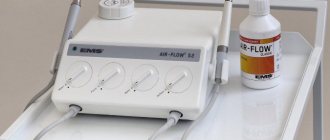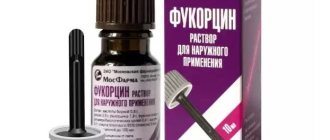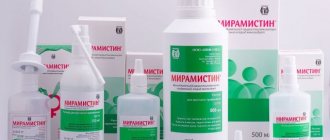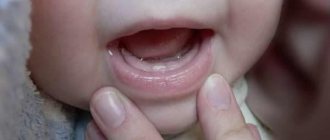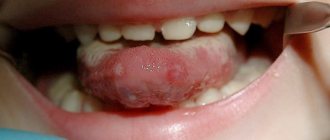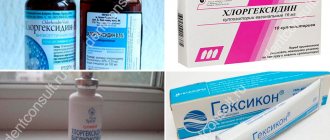What should an effective disinfectant contain?
Today there are two types of antiseptics that work well against germs, bacteria, and viruses.
The first type is alcohol-based liquids; it should contain at least 60%, preferably more. If the content is less, then the protein shell of microbes and viruses will not be destroyed and some of them will remain invulnerable. The alcohol must be ethyl or isopropyl.
The second type of antiseptic is based on chlorhexidine. It does not erode longer, provides longer-lasting protection, but damages the skin of your hands. However, alcohol also dries the skin, so such liquids usually contain softeners.
Chlorhexidine - what is it and how does it work?
When considering Chlorhexidine in gynecology, women should understand what kind of drug it is and how to work with it. So, Chlorhexidine is the most popular antiseptic today, which, upon contact with the skin and mucous membranes, envelops them and destroys the membrane membranes of bacteria located on them. At the same time, in a diluted state, it is not able to destroy bacteria, but is able to inhibit the proliferation of bacteria and microorganisms.
The effect of Chlorhexidine is up to 4 hours.
How to protect the skin of your hands after using an antiseptic?
High-quality formulations already include various softeners, moisturizers, glycerin, and vitamins that reduce the effect of alcohol and chlorhexidine on the skin. However, sometimes this is not enough, especially with frequent use of solutions. To prevent irritation, redness, and allergic reactions, do not use too hot water for washing, use cream soap instead of regular soap, drink more water (7-8 glasses a day). If cracks and wounds appear, buy special ointments, do not delay treatment.
Chlorhexidine bigluconate solution 0.5 mg/ml 100 ml
Name
Chlorhexidine bigluconate.
Description
Transparent, colorless or slightly yellowish liquid, odorless.
Main active ingredient
Release form
Solution for external use.
Dosage
0.05% 100 ml.
pharmachologic effect
An antiseptic with a pronounced bactericidal effect against gram-positive and gram-negative bacteria (does not affect acid-fast forms of the latter): Treponema pallidum, Chlamidia spp., Ureaplasma spp., Neisseria gonorrhoeae, Gardnerella vaginalis, Bacteroides fragilis, protozoa (Trichomonas vaginalis), microbial spores , viruses, fungi; has little effect on some species of Proteus and Pseudomonas. Chlorhexidine bigluconate is also active against treponemas, gonococci, and trichomonas. Retains activity (slightly reduced) in the presence of blood and pus. Cleanses and disinfects the skin without causing damage.
Indications for use
The drug is used for the prevention of sexually transmitted diseases (syphilis, gonorrhea, trichomoniasis, chlamydia, etc.). It is used for antiseptic treatment of wounds, abrasions and cracks, burns, for bacterial and fungal diseases of the skin and mucous membranes, incl. in urology, surgery, obstetrics and gynecology. In dentistry, it is used for rinsing the mouth in cases where compliance with hygiene rules is difficult, in the postoperative period after flap periodontal surgery, for washing periodontal pockets, fistulas, and abscess cavities. Since chlorhexidine bigluconate has a cytotoxic effect, the concentration of the rinse solution should not exceed 0.25 mg/ml.
Directions for use and doses
The drug is used in the form of irrigation, rinsing and application - 5-10 ml of solution is applied to the affected surface of the skin or mucous membranes with an exposure of 1-3 minutes 2-3 times a day (on a tampon or by irrigation). For the prevention of sexually transmitted diseases, the drug is effective if used no later than 2 hours after sexual intercourse. Used after urination: using a nozzle, insert into the urethra for men (2-3 ml), for women into the urethra (1-2 ml) and into the vagina (5-10 ml) and hold for 2-3 minutes. Treat the skin of the inner thighs, pubis, and genitals. After the procedure, it is not recommended to urinate for 2 hours. Complex treatment of urethritis and urethroprostatitis is carried out by injecting 2-3 ml of the drug into the urethra 1-2 times a day, the course is 10 days, procedures are prescribed every other day. The rinse solution is usually prescribed 2-3 times a day (for rinsing the mouth, the drug should be mixed with an equal amount of water).
Use during pregnancy and lactation
Use with caution in pregnant and lactating women due to the lack of data on experience with clinical use. Do not treat the surface of the mammary glands before feeding.
Precautionary measures
The bactericidal effect increases with increasing temperature. At temperatures above 100 °C, the drug is partially decomposed. Contact of hypochlorite bleaches on fabrics that have previously been in contact with chlorhexidine-containing products may cause brown stains. In patients with open traumatic brain injury, spinal cord injuries, or perforation of the eardrum, contact with the surface of the brain, meninges, and the cavity of the inner ear should be avoided. In case of contact with the mucous membranes of the eyes, they should be quickly and thoroughly rinsed with water. Concomitant use with iodine is not recommended. Use in children. The use of chlorhexidine solution (aqueous or alcoholic) in newborns as a skin antiseptic before invasive procedures is associated with a certain risk of developing a chemical burn. Based on spontaneous reporting and literature data, a higher risk of skin reactions has been identified in preterm neonates, particularly those born before 32 weeks of gestation, in whom chlorhexidine was used during the first two weeks of life. Before performing invasive procedures, it is necessary to remove all materials soaked in chlorhexidine: bandages, sheets, napkins, gowns, etc. Do not use excessive amounts of solution. The solution should not be allowed to accumulate in skin folds, under the patient’s body, or on materials that are in direct contact with the child’s skin. If an airtight dressing (occlusive dressing) is to be applied to skin that has previously been exposed to chlorhexidine, ensure that there is no excess chlorhexidine solution on the skin before applying the dressing. Use in elderly people. There are no data regarding the specifics of use in elderly patients.
Interaction with other drugs
Not compatible with detergents containing an anionic group (saponins, sodium lauryl sulfate, sodium carboxymethylcellulose). Concomitant use with iodine is not recommended. The presence of soap can inactivate chlorhexidine digluconate, so before using the drug, any remaining soap must be thoroughly rinsed off. Ethanol enhances the effectiveness of the drug.
Contraindications
Hypersensitivity, dermatitis, viral skin diseases, age up to 12 years. It is not recommended for use on large surface wounds.
Compound
A 40 ml bottle contains: active ingredient: chlorhexidine bigluconate (in the form of dezine (chlorhexidine bigluconate 20% solution)) – 20 mg; excipient: purified water – up to 40 ml. A 100 ml bottle contains: active ingredient: chlorhexidine bigluconate (in the form of dezine (chlorhexidine bigluconate 20% solution)) – 50 mg; excipient: purified water – up to 100 ml. A 200 ml bottle contains: active ingredient: chlorhexidine digluconate (in the form of dezine (chlorhexidine digluconate 20% solution)) – 100 mg; excipient: purified water – up to 200 ml.
Overdose
Cases of overdose with external use are unknown. When ingested, the drug is practically not absorbed, so systemic effects are unlikely. However, in case of accidental ingestion, gastric lavage is necessary. If necessary, carry out symptomatic therapy.
Side effect
Possible allergic reactions (skin rash), dryness and itching of the skin, dermatitis, photosensitivity, stickiness of the skin of the hands (within 3-5 minutes), chemical burns of newborns (frequency unknown). In the treatment of gingivitis – staining of tooth enamel, tartar deposits, taste disturbance. If any adverse reactions occur, including those not listed in these instructions, you should consult a doctor.
Storage conditions
Store at a temperature not exceeding 25 °C. Keep out of the reach of children.
Buy Chlorhexidine bigluconate solution 0.5 mg/ml 100 ml in the pharmacy
Price for Chlorhexidine bigluconate solution 0.5 mg/ml 100 ml
Instructions for use for Chlorhexidine bigluconate solution 0.5 mg/ml 100 ml
Is it possible to drink antiseptic?
No you can not. Unfortunately, some people use antiseptics internally due to the presence of alcohol in the composition. The result of such use is burnt internal organs, severe poisoning, and this is at best; at worst, the person dies. For the production of antiseptics, two types of alcohol are used - ethanol and isopropyl. The second is cheaper, is not suitable for the production of alcohol-containing drinks due to toxicity and is not suitable for drinking, but due to its low price it is most often used in the manufacture of sanitizers.
Douching with Chlorhexidine in gynecology: how to do it, what helps?
In this section, we will consider the most discussed topic in recent years - the need for douching, and in particular douching with Chlorhexidine in gynecology. So, let's start with the fact that a woman's vagina is a self-cleaning organ, and at times when a woman is healthy, douching can cause harm rather than benefit, as it will wash away natural lubrication and beneficial microflora.
It’s a different matter if you have the following diseases:
- Thrush (candida);
- Nonspecific cervicitis;
- Chlamydia;
- Herpes;
- Vaginitis;
- Vulvovaginitis.
Also, douching can be prescribed by a doctor after surgery, abortion, miscarriage, as well as some other inflammatory processes.
Douching is done with a solution of Chlorhexidine 0.05%. Pharmacies sell both a ready-made solution, and you can dilute it yourself with distilled or boiled water.
So, the process of douching with Chlorhexidine:
- Prepare a solution of Chlorhexidine at room or warm temperature (can be diluted with warm water);
- Wash the genitals with warm water without soap (Chlorhexidine reacts with soap and its effect is canceled);
- Wash with Chlorhexidine solution (lips, around them, as well as the entrance to the vagina);
- Lie horizontally, and using a special cup with a spout, or a bulb, or a syringe without a needle, inject the Chlorhexidine solution into the vagina;
- Remove the device and squeeze the vaginal muscles, pushing the solution inside;
- Leave for 15 minutes and take a vertical position so that the excess solution pours out;
- Dry your body with a towel and put on clean, steamed or ironed underwear;
- Do not pee for 2 hours (therefore, it is recommended to douche at night).
Gynecological douche
Can alcohol be used as an antiseptic?
In its pure form, we do not recommend using alcohol as an antiseptic. In sanitizers, the amount of ethyl ranges from 60 to 80%; they are no longer used. The alcohol strength is 96%, meaning this concentration will almost certainly cause skin problems, especially with repeated use. In addition, even the simplest sanitizer contains auxiliary substances - glycerin, hydrogen peroxide and others. They not only perform antiviral functions, but also serve as softeners, humidifiers, etc. Thus, using alcohol carries the risk of burns, irritation, and other problems.
By the way, you cannot use vodka either, it is ineffective, since its strength is only 40%, which will not kill viruses.
Indications of Chlorhexidine in gynecology
Chlorhexidine in gynecology is indicated for girls and women, both during surgical interventions and in home treatment.
Chlorhexidine is prescribed in gynecology:
- During operations;
- During childbirth;
- Thrush (candidiasis);
- All fungal diseases;
- Vaginitis;
- In the complex treatment of STDs;
- Prevention of infectious and inflammatory diseases;
- Before and after installation of the spiral;
- With complex treatment after abortion;
- In preparation for and after intervention for diathermocoagulation of the cervix;
- As a prophylaxis after surgery.
If you find symptoms of thrush - get examined and start relieving the condition with Chlorhexidine
Indications and contraindications for use
Chlorhexidine is indicated for use in the following cases:
- rhinitis (acute or chronic);
- runny nose, which arose against the background of complications of pathologies provoked by the activity of harmful microorganisms;
- sinusitis - in this case the drug is prescribed together with other medications;
- an inflammatory process occurring in the paranasal sinuses, accompanied by purulent formations (purulent sinusitis);
- preparation for examination of the nasal sinuses using an endoscope;
- prevention of colds;
- the presence of purulent formations in the nose - boils;
- preparation for surgery.
Read more about the treatment of purulent rhinitis in this article.
The drug has the following contraindications:
- swelling of the mucous membranes of the sinuses;
- children under 7 years of age, since the main active component of the product can injure unformed and unprotected mucous membranes of the nasal passages;
- subjective intolerance to the main active component of the antiseptic;
- increased sensitivity of mucous membranes;
- curvature of the nasal septum, since in this case the procedure will not give the desired effect.
Read about the causes and treatment of yellow snot in adults here.
A deviated nasal septum can provoke the development of hay fever and allergies.
Chlorhexidine in gynecology: tips and reviews
Natalya : thrush often occurs because hormonal levels are disrupted. Chlorhexidine saves. It is enough to wash your face 2-3 times a day and light candles once a day. But I note that all this is in combination with hormonal drugs and anti-candida pills. Do not self-medicate - be sure to undergo treatment under the supervision of a doctor.
Inna : vaginal herpes is a real problem that cannot be cured. As soon as you have a cold or illness, it will come out immediately. Antiviral drugs help, in combination with Chlorhexidine suppositories and washing. Relief in the first hours, and return to normal within a week.
Are you concerned about your health? You may like our articles:
- How to douche with Chlorhexidine for thrush? Is it possible to douche with Chlorhexidine during pregnancy?
- Chlorhexidine and Hydrogen Peroxide are the same thing or not, what is the difference between them?
- How to correctly draw insulin into an insulin syringe: step-by-step instructions;
- Rules and places for administering insulin at home.
Baths with Chlorhexidine: how to do it in gynecology?
And in conclusion, we will talk about another method of using Chlorhexidine in gynecology - baths. This is a medical procedure that is performed exclusively by a doctor.
- Before the procedure, it is necessary to empty the intestines and bladder, and also wash yourself without soap with Chlorhexidine;
- Next, the patient lies down on the gynecological chair, and the doctor inserts a gynecological speculum;
- The doctor removes all the mucus and only after that introduces a solution with which the patient rests for 10-15 minutes;
- The doctor monitors the patient’s condition, and after 15 minutes, removing the speculum, helps clean the vagina of excess fluid into a previously prepared container.
